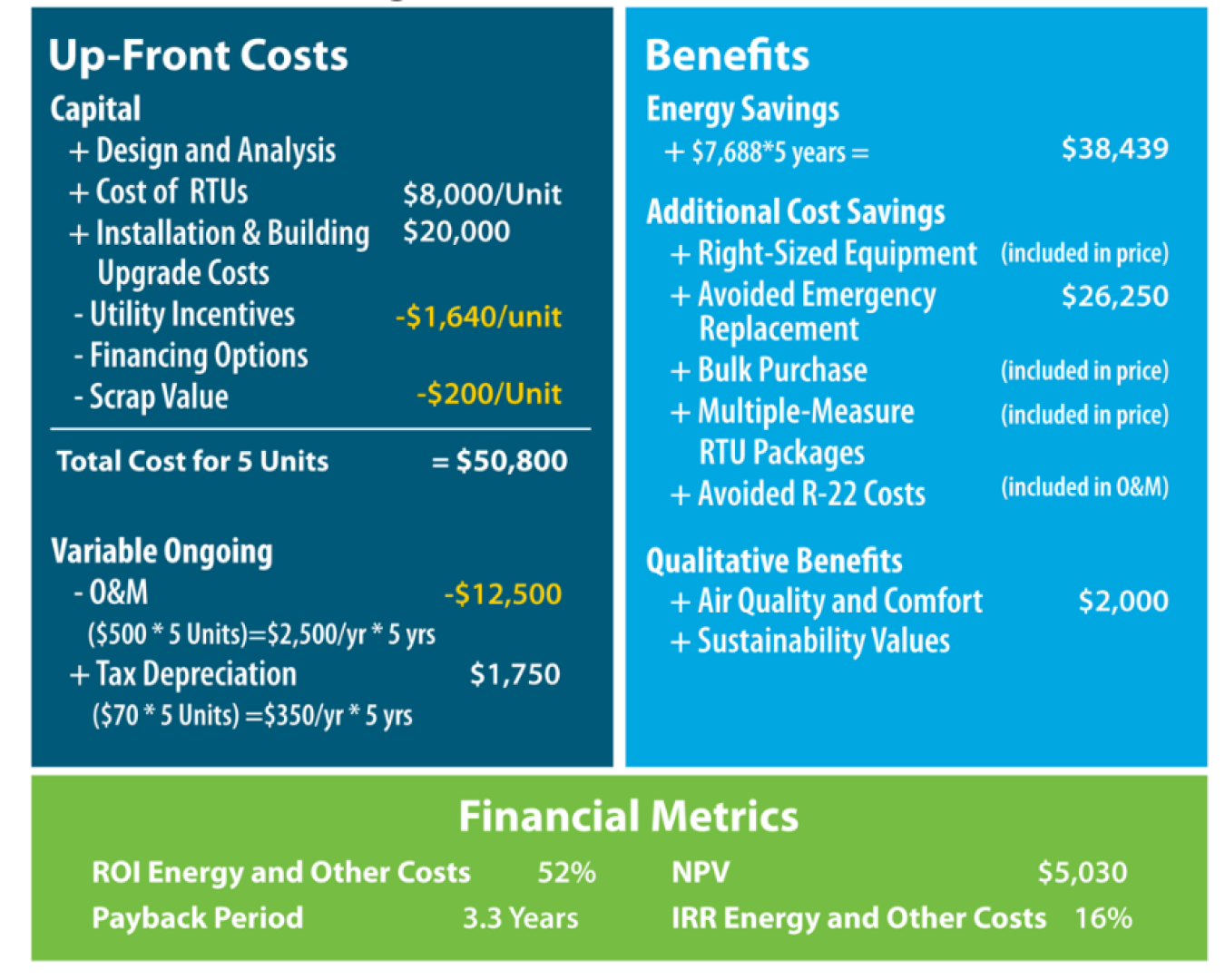It’s a common challenge in the deferred maintenance world of commercial buildings: rooftop units (RTUs) over 15 years old often provide reduced s...
February 16, 2016
By Marta Schantz
It’s a common challenge in the deferred maintenance world of commercial buildings: rooftop units (RTUs) over 15 years old often provide reduced service and waste substantial energy and money. However, facility managers often wait for the RTUs to die a slow, expensive death or fail completely before replacing them. In many instances, proactively replacing inefficient and underperforming RTUs with high-efficiency units is a smart business move, especially when compared with replacement-on-failure or even with a like-for-like replacement at the end of an RTU’s useful service life.
Key Facts
- Rooftop units over 15 years old can waste substantial energy and money, while providing less-than-quality service.
- The Advanced RTU Campaign published a business case for a proactive high-efficiency RTU replacement strategy.
- Walgreens realized more than $1 million in savings from material and labor budgets after implementing an RTU replacement strategy.
The Advanced RTU Campaign, co-organized by the Better Buildings Alliance, the Retail Industry Leaders Association, and ASHRAE, recently published a business case for a proactive high-efficiency RTU replacement targeted to facility maintenance staff and building engineers. The guide introduces key elements in identifying and estimating cost/benefit and conducting analysis to provide financial metrics to decision-makers.
A hypothetical calculation of an example standalone retail store that is considering RTU replacement is shown in the above(+/-) figure. Not only is it important to consider the quantitative costs and benefits, but also the qualitative factors like the value of air quality, comfort, and sustainability. Further, there are considerations outside of the traditional energy-usage focus: things like the scrap value of old RTUs, tax depreciation losses, and building upgrade costs.
Walgreens developed a successful program to strategically retire RTUs prior to failure and replace them with high-efficiency units. In just 150 stores (less than 2% of their total), Walgreens realized more than $1 million in savings from material and labor budgets. Walgreens’ planned RTU replacement process includes right-sizing equipment and optimizing replacement timing rather than an emergency replacement upon failure. In one store, Walgreens reduced RTU energy consumption by more than 50% and energy costs by more than $14,000 annually. Learn more in their case study.


